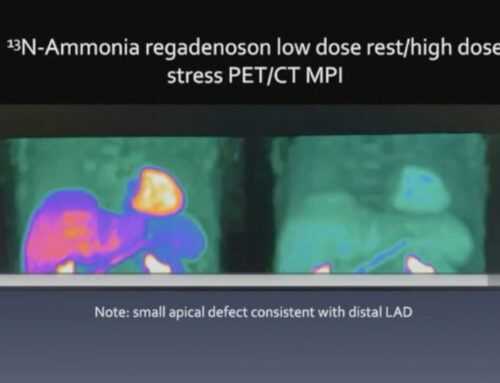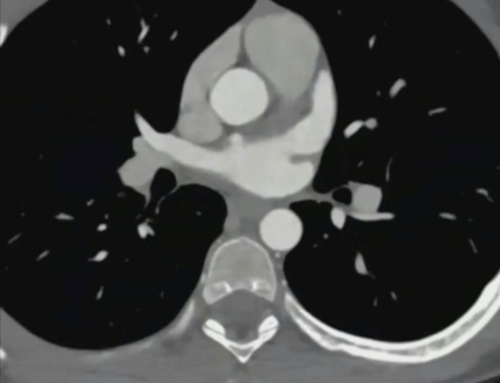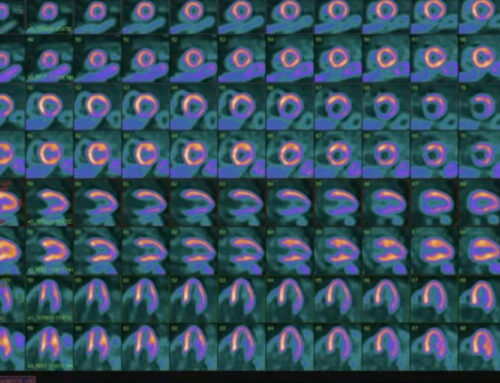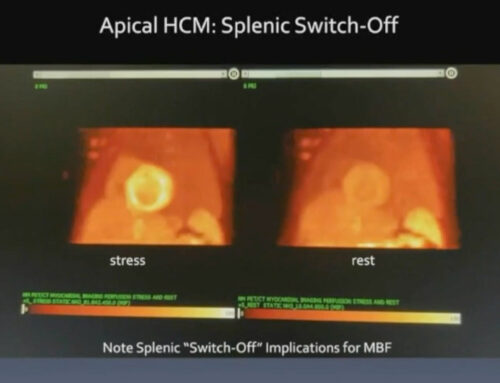Presented by: Tom L. Rosamond, MD, MSc, FAHA, FACC, FASE
Identifying potential in-stent restenosis with new onset of chest pain with N-13 Ammonia Cardiac PET/CT
Dr. Thomas Rosamond is Board Certified in Cardiovascular Disease. Dr. Rosamond is the Division Chief of Cardiovascular Imaging and Medical Director of Non-Invasive Imaging Services at The University of Kansas Health System. He earned his Postdoctoral Fellowship in Cardiovascular Magnetic Resonance Imaging at Washington University School of Medicine -Barnes Jewish Hospital in St. Louis, Missouri.
Patient History
The patient was a 78-year-old male who experienced a non-ST-elevation myocardial infarction (non-STEMI) in 2019. During that event, the patient underwent placement of a drug-eluting stent in the left circumflex artery, as well as the identification of a chronic total occlusion (CTO) in the right coronary artery with collateralization.
Presentation of Recurrent Symptoms
Six months after the initial non-STEMI event, the patient returned with additional chest pain. The key question was whether this represented early restenosis of the previously placed drug-eluting stent, or if the right coronary artery CTO was simply considered “dead” myocardium from the prior non-STEMI.
Diagnostic Evaluation
Dr. Tom Rosamond, the Division Chief of Advanced Cardiovascular Imaging and Director of the PET CT Lab at the University of Kansas Health System, presented a detailed review of the patient’s case.
The initial 2019 study clearly showed the high-grade CTO and collateralization in the right coronary artery. The drug-eluting stent placement in the left circumflex artery also appeared to have been successful.
Quantitative analysis of the image data sets revealed that the right coronary artery territory was fully ischemic but still viable, as indicated by the tracer accumulation. The reduced stress flow in the right coronary artery compared to other vascular supply zones suggested the need for revascularization.
Treatment and Outcome
The patient subsequently underwent a successful coronary angiography and revascularization of the CTO in the right coronary artery, performed by Dr. Peter Tadros. Four drug-eluting stents were placed, resulting in a favorable final outcome.
Key Takeaways
This case study highlights the value of comprehensive cardiac evaluation, including advanced imaging techniques like N-13 Ammonia Cardiac PET/CT, in identifying and managing complex coronary artery disease. It demonstrates the potential benefits of revascularizing CTOs, even when the myocardium may appear compromised, as the tissue can still be viable and responsive to improved blood flow.
By sharing this insightful case, the University of Kansas Health System team is contributing to the ongoing discussion and advancement of cardiovascular care. As clinicians continue to explore optimal strategies for managing complex coronary artery disease, cases like this can provide valuable insights and lessons learned.





